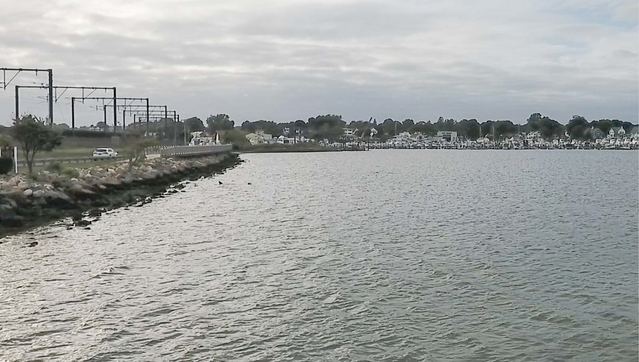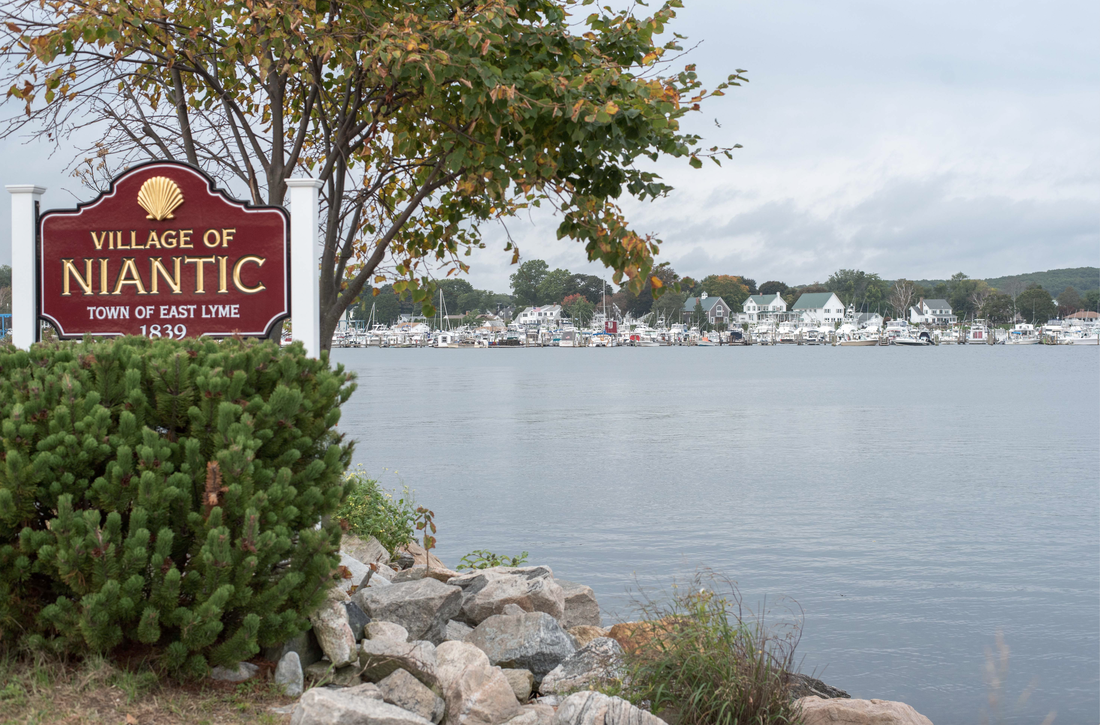THE NIANTIC RIVER ESTUARY
Keep Industrial Shellfish Farming Equipment Out of the Niantic River
Here in southeastern Connecticut, the Niantic River is a small, shallow estuary where hundreds of families live on both sides of the river in East Lyme and Waterford. The river provides extensive recreational opportunities ranging from boating, paddle boarding and kayaking to bird watching, fishing and personal shellfishing. A thriving tourism industry has been created in the region and many local businesses are sustained by these recreational activities on the river. This is about to change with a proposal now before East Lyme officials.
OUR POSITION: INDUSTRIAL AQUACULTURE PUTS OUR RIVER AT RISK
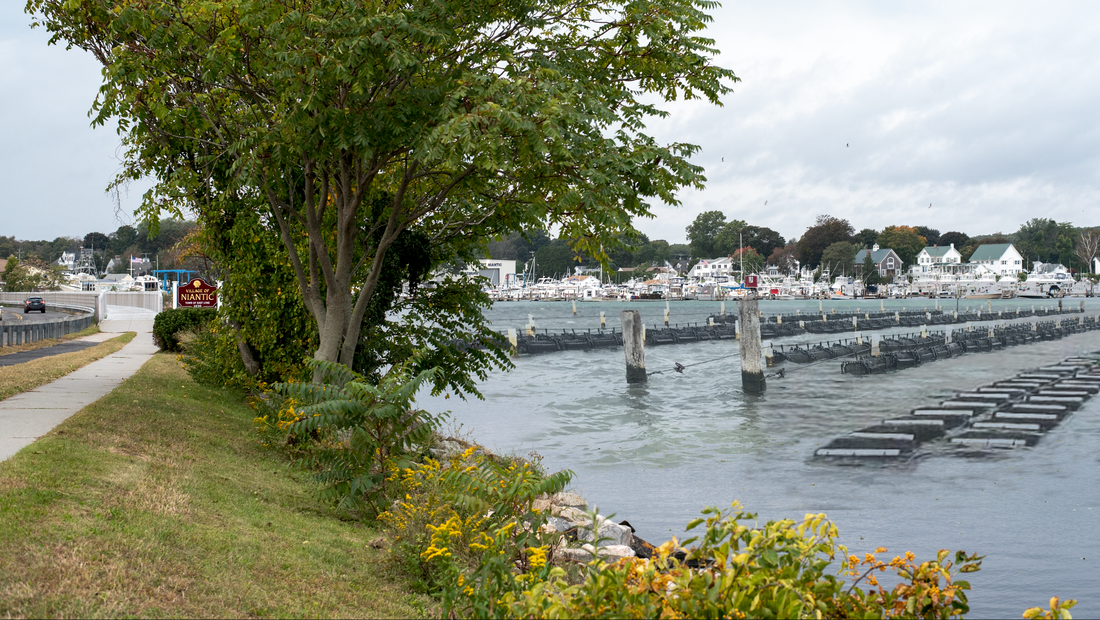
If industrial-scale shellfish farming equipment is installed in the Niantic River, the photo illustration above shows the potential impact that 12,000 pieces of equipment could have. The pristine river as it appears today, below.
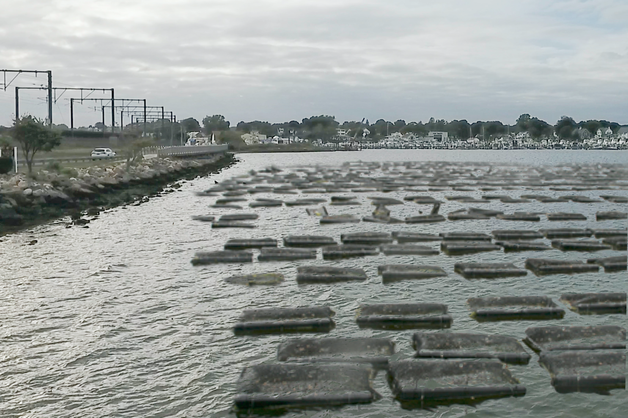
The type of commercial shellfishing "gear", as it is called, is intrusive and extensive. The photo illustration above depicts what the Niantic River might look like if approval is granted for "Type II" aquaculture. As it appears today, below.
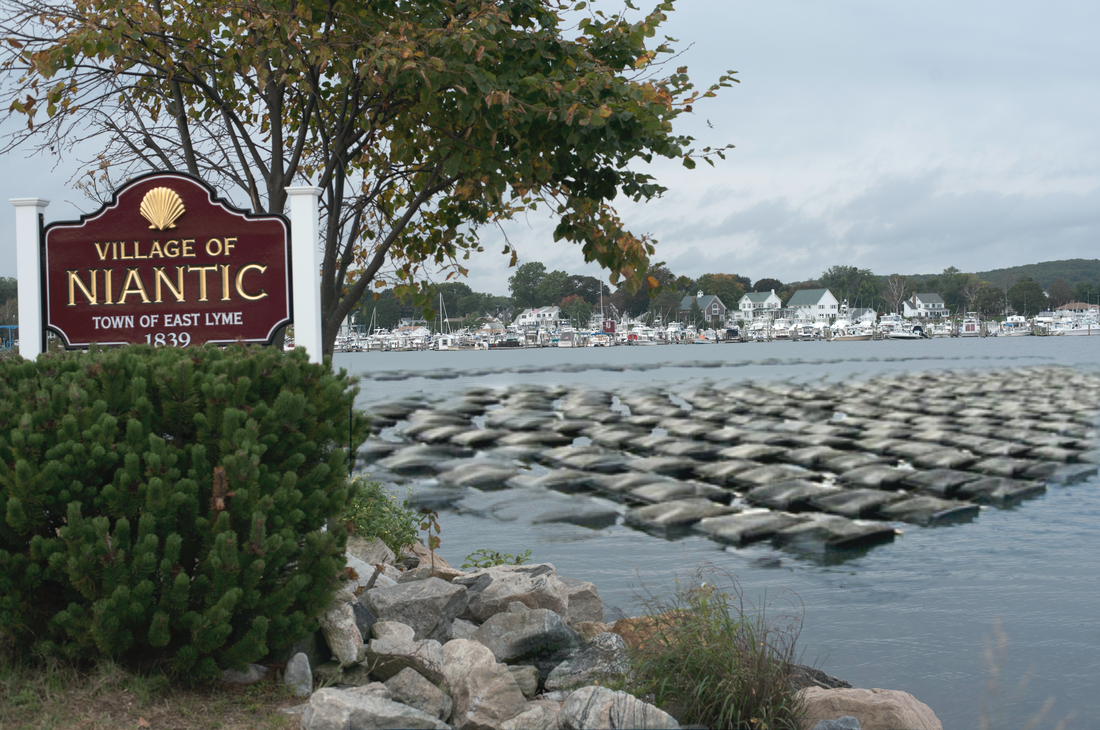
Paddlers, kayakers and small boat enthusiasts will be put in harm's way if structures are installed by industrial shellfishing operators, as shown in the photo illustration above. Recreational, paddle-powered boaters will be forced into the navigation channels used by large motorized watercraft. Below, the estuary as it appears today.
|
Unless YOU take action now, the type of industrial shellfish farming being considered for the Niantic River estuary will
Look no further than the conceptual "after" images to the left that illustrate what the Niantic River might look like with industrial shellfish farming equipment. (These digitally enhanced images are not related to any specific proposal or installation. An actual river aquaculture operation can be seen here.)
Industrial shellfish farming (also known as "Type II aquaculture") is the cultivation of oysters in containers that are held above the seafloor and suspended in the water column. This type of "off-bottom" shellfish farming uses extensive gear (including cages, rack-and-bags, trays, and floating and suspended systems that use PVC piping and long lines) that rise above the water line. (Photos of the various types of equipment can be found here.) This is what is being proposed for an industrial shellfish farming operation in our local river. This kind of industrial farming equipment is new to our region and will have an irreversible, adverse impact on our river, the estuary, property and business values, and the safety of our residents and tourists who visit the region to enjoy the river. While industrial shellfish farming gear may make sense in open waters, it simply isn’t appropriate for a small river that is enjoyed primarily for recreation and in an area that is predominately residential. The Waterford-East Lyme Shellfish Commission (WELSCO) has acted, outside of its statutory authority, and expanded its powers to allow industrial shellfish operations in the river without consideration for the impact on the businesses, residents, the river or our region. The high visibility and associated markers that go along with the kind of shellfish farming that have been proposed creates unsightly navigational hazards, imposes recreational limitations, and detracts from the natural beauty and accessibility of the river. In fact, off-bottom oyster-farming equipment is incredibly intrusive. The gear on some industrial shellfishing developments can protrude above the water line, restricting access, creating hazards and preventing recreational activities. For these very reasons, Waterford, Stonington and Branford have, so far, not accepted this kind of industrial shellfish operation in their residential communities. Under one proposal, equipment for a shellfish farm in the Niantic River near Cini Park and Route 156 would include more than 12,000 pieces of gear:
Almost four acres of the estuary, or over 170,000 square feet of precious surface water would be removed from recreational use where over 12,000 pieces of equipment would be installed, with the potential for another 6 acres to be added. If approved, an operation of this nature would negatively impact the river and provide little to no environmental benefit. Nor would it benefit towns on either side of the river. Any for-profit, commercial proposal like this must be weighed against the safety concerns and recreational needs of the community, not to mention the economic impacts on business and property values, etc. Simply put: Other locations, outside of the Niantic River, make more sense for this development. We need your help. Say No to Industrial Shellfish Farming in the Niantic River. Town officials must hear from residents who are opposed to industrial shellfish farming in the Niantic River. Upcoming meetings:EAST LYME HARBOR MANAGEMENT/SHELLFISH COMMISSION EAST LYME TOWN HALL Tuesday, December 18, 2018 at 7:30 P.M.
WATERFORD-EAST LYME SHELLFISH COMMISSION (WELSCO) WATERFORD TOWN HALL Thursday, December 20, 2018 at 7:30 P.M. Two topics are of interest:
|
Note: The "after" pictures shown on this page are conceptual renderings designed to illustrate the potential installation of equipment for industrial shellfish farming in the Niantic River. The equipment (or "gear") pictured here is for illustrative purposes. These images do not reflect a specific proposal, project or plan for installation.
THE NIANTIC RIVER ESTUARYA River at Risk
|

